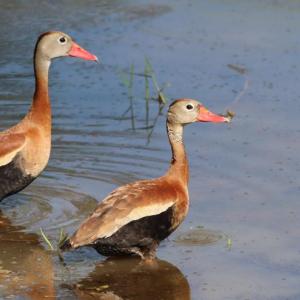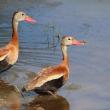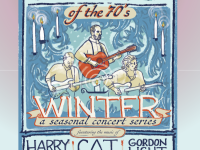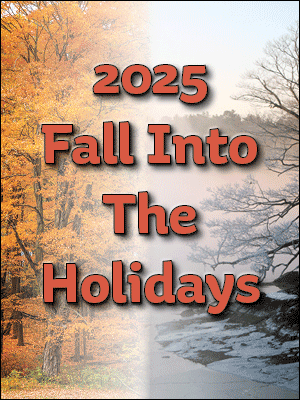The Duck That Would Rule the World?
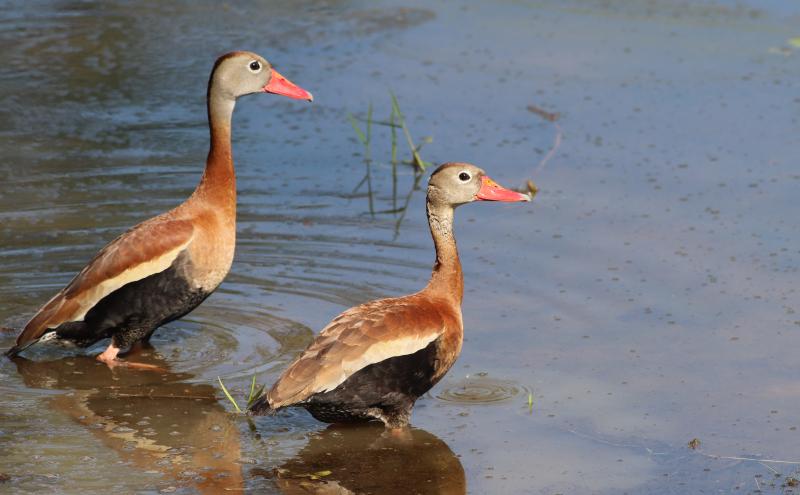 Once a rare species found only as far north as the Rio Grande Valley of Texas, the striking black-bellied whistling-duck is now regular across eastern Texas, Louisiana, and Florida, and smaller numbers occur regularly across much of the eastern U.S. Photo by Gary Leavens, courtesy of Wikimedia Commons.
Once a rare species found only as far north as the Rio Grande Valley of Texas, the striking black-bellied whistling-duck is now regular across eastern Texas, Louisiana, and Florida, and smaller numbers occur regularly across much of the eastern U.S. Photo by Gary Leavens, courtesy of Wikimedia Commons.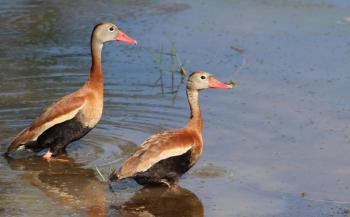 Once a rare species found only as far north as the Rio Grande Valley of Texas, the striking black-bellied whistling-duck is now regular across eastern Texas, Louisiana, and Florida, and smaller numbers occur regularly across much of the eastern U.S. Photo by Gary Leavens, courtesy of Wikimedia Commons.
Once a rare species found only as far north as the Rio Grande Valley of Texas, the striking black-bellied whistling-duck is now regular across eastern Texas, Louisiana, and Florida, and smaller numbers occur regularly across much of the eastern U.S. Photo by Gary Leavens, courtesy of Wikimedia Commons.When we first started birding, we saw in some field guides, illustrations of odd, long-necked, long-legged tropical ducks that were called “tree-ducks.” Later, the name was changed to “whistling-ducks,” an equally fascinating name.
These were birds that we only dreamed of seeing, most likely if we someday visited some place in Latin America, or perhaps, in the case of ferruginous whistling-ducks, in Florida, Texas, or Louisiana, where the species also was shown to occur. The field guide showed the other, the black-bellied whistling-duck, with its bright red bill and long, pink-red legs, barely making it into the Rio Grande Valley of Texas from its more extensive range from Mexico south across South America. That was certainly not a species we would ever imagine making it to Maine.
But it has.
Amazingly, there have been at least four records of one or more black-bellied whistling-ducks right here in Maine since the first ones were found in 2010, the latest being a flock of 11 this year that have been in Camden since the last few days of April.
This is part of a pattern of expansion that has been happening for a number of decades. The birds now breed across coastal Texas to Louisiana and across most of Florida. We have witnessed the startling increase ourselves in Florida from our first visits many years ago when we never saw black-bellied whistling-ducks to now, when it is not uncommon for us to see fifty or a hundred wheeling noisily about the sky some evenings in central Florida while we’re out for a bike ride. As their numbers continue to increase, breeding has been documented north in Oklahoma, Arkansas, and North and South Carolina. Birds have been found regularly wandering across much of the eastern U.S. and into southern Canada.
The name “whistling-duck” is a great one for these birds. Flocks of them are quite loud, making all sorts of rather strange, high-pitched complaining squeals that you probably would not first imagine emanating from a flock of ducks.
Interestingly, the increase in numbers and range of black-bellied whistling-duck populations does not seem to be isolated to the U.S. We have witnessed and documented the increase in records of the species in Aruba, Curaçao, and Bonaire over the last few decades, with the species shifting from rare to now a breeding species on all three of these islands off the Venezuelan coast of South America.
The reasons for the species’ rapid increase are all speculative. In many places, including here in Maine, the birds seem to somehow seek out and find shallow, sewage treatment ponds. Could it be that there are more of these and other kinds of small, shallow human-made water sources scattered around the landscape that they prefer? Seems hard to believe given that there are also lots of shallow natural ponds and marshes across the eastern U.S. Others have suggested that the expansion of black-bellied whistling-duck is the result of climate change, allowing populations to thrive in the warmer temperatures that are advancing northward year by year and that is the norm for the species in the tropics.
Whatever the cause, the species we could never imagine showing up in Maine, has done so yet again.
Jeffrey V. Wells, Ph.D., is a Fellow of the Cornell Lab of Ornithology and Vice President of Boreal Conservation for National Audubon. Dr. Wells is one of the nation's leading bird experts and conservation biologists and author of the “Birder’s Conservation Handbook.” His grandfather, the late John Chase, was a columnist for the Boothbay Register for many years. Allison Childs Wells, formerly of the Cornell Lab of Ornithology, is a senior director at the Natural Resources Council of Maine, a nonprofit membership organization working statewide to protect the nature of Maine. Both are widely published natural history writers and are the authors of the popular books, “Maine’s Favorite Birds” (Tilbury House) and “Birds of Aruba, Bonaire, and Curaçao: A Site and Field Guide,” (Cornell University Press).

